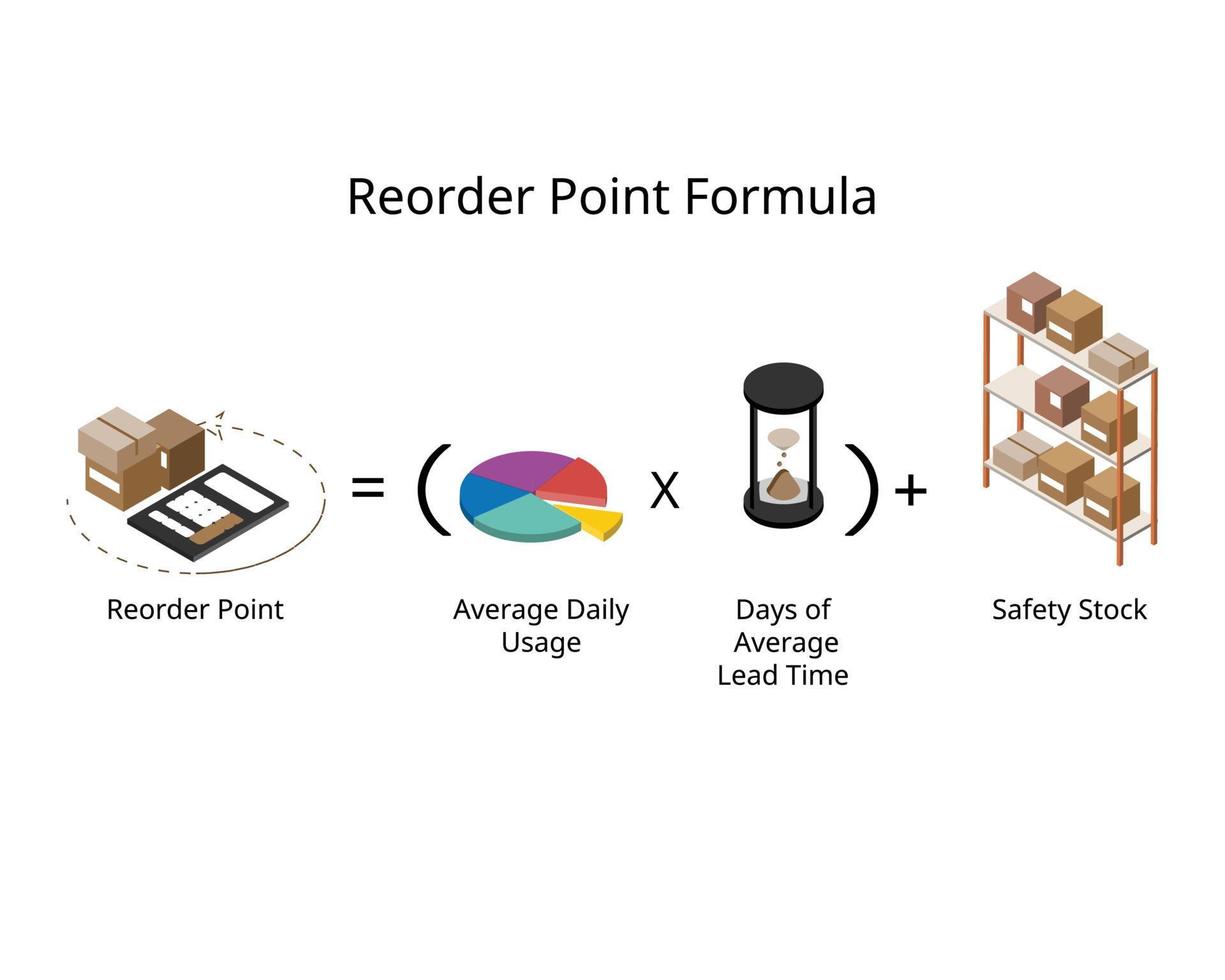
Using an inventory management system can provide a holistic view of your inventory and keep track of reorder points for your SKUs. A liability definition is the point at which businesses order new stock from the supplier. In most cases, each SKU will have a specific reorder point, which is met when the number of SKUs in storage falls to a predetermined level.
What is reorder level of stock?
You’re either grappling with overstocked items gathering dust or facing the dreaded “out of stock” label just when demand peaks. Safety stock which ABC Ltd. has decided to hold equals 2,500 units (500 units of daily usage multiplied by 5 days). In management accounting, reorder level (or reorder point) is the inventory level at which a company would place a new order or start a new manufacturing run. In our example, 100 units per day multiplied by 14 days equals 1,400 units.

Determining ROP without safety stock
Next, determine the Lead Time, which is the period it typically takes from placing an order to receiving the goods, including processing, shipping, and other relevant factors. For instance, if it takes two weeks to receive an order, the Lead Time is 14 days. When this quantity is set, the buyer of materials need not recalculate every time the number of materials to be ordered.
Calculate anything with Sourcetable AI. Tell Sourcetable what you want to calculate. Sourcetable does the rest.
These variables are often dynamic, requiring constant vigilance and adjustment. In this section, we’ll delve deeper into these factors, offering you a roadmap to navigate the complexities. Both demand and lead time must be in the same unit of time i.e. both should in in days or weeks, etc. Some accountants do not differentiate between the ordering level and the minimum stock level, but others draw a distinction between the two.
- The manufacturer should hold 132 safety stock units to avoid bottlenecks in production.
- Finance Strategists has an advertising relationship with some of the companies included on this website.
- You should look into customer demand so you can understand when customers are more likely to purchase your products and you can forecast demand correctly.
- Supplier Reliability plays a crucial role in determining the aforementioned levels.
In this example, the business should reorder the organic face serum when the stock level drops to 330 units. This ensures that they have enough stock to meet demand during the 14-day lead time and also have a safety buffer of 50 units in case of unexpected fluctuations in demand or supply. With Bezos’s advanced inventory management software, you can effortlessly monitor all three metrics. Our platform offers real-time analytics, enabling you to adjust your reorder levels based on up-to-the-minute data.
The reorder level is essential for maintaining a consistent flow of goods, preventing demand from exceeding supply. By setting appropriate reorder levels, businesses can meet customer demands efficiently without overinvesting in inventory. The reorder level formula is that inventory level at which an entity should issue a purchase order to replenish the amount on hand. When calculated correctly, the reorder level should result in replenishment inventory arriving just as the existing inventory quantity has declined to zero.
First, identify the Average Daily Usage (ADU) by analysing sales or consumption data over a significant period, such as the past quarter or year. Calculate the total units sold or used, then divide by the number of days in that period. For example, if you sold 9,000 units over 90 days, the ADU would be 100 units per day. In a nutshell, the re-order level is the order point of inventory which when reached, the action for material purchase needs to be initiated.
Begin by identifying the average demand, which is the usage rate of a product over a specific period. Determine the lead time, the duration between placing an order and its delivery. Reassess and adjust the reorder level routinely to align with changing market conditions, variations in lead time, or modifications in demand patterns.
That’s why you must know the reorder level and reorder qty to keep your shipping costs, storage space, and stockouts at a minimum. Let’s understand what reorder level is and how you can calculate reorder quantity using the reorder quantity formula. Average delivery lead time is the average amount of time it takes for a shipment to arrive from the time the order was placed.
A reorder point (ROP) is the level at which inventory needs to be replenished so it doesn’t drop below a certain threshold where it is at risk of going out of stock. Thankfully, one way to get this right is to use the Reorder Point Formula (FOP) to calculate your reorder level, eliminating the need for guesswork and using your gut instinct to make decisions. It’s not uncommon for the number of SKUs a business sells to grow as the business does.
A grocery store, for example, would likely have higher reorder points for quick-selling produce than a furniture store would for slow-selling mattresses. Sourcetable, an AI-powered spreadsheet tool, revolutionizes how we approach calculations in the digital age. You omnichannel fulfillment partner that’s an extension of your brand, from unboxings to 2-day shipping. Get in touch with our fulfilment experts to find out how we can help your business sell, grow, and Scale Up. Thanks to our award-winning software, ControlPort™, you have full control and clarity over the status of your inventories at all times, right across our international network of fulfilment centres. Consumer demand is an unpredictable force, shaped by influences like seasonal shifts, economic variations, and even trending social media happenings.


